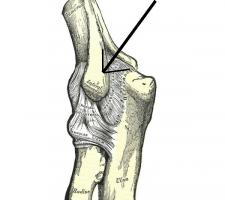Acquired brain damage: its 3 main causes
Know the causes that damage the brain and consequences originated in behavior is vital in the study of the neuropsychology. Thanks to the appearance of functional and structural neuroimaging techniques, it has been possible to study damaged brain structures from the moment of injury, as well as their subsequent evolution.
Likewise, in most cases there are physical, cognitive and emotional sequelae that end up generating some type of disability.
Causes of acquired brain damage in adults
In adults, the following causes of acquired brain damage stand out (DCA).
1. Strokes
Cerebrovascular accidents (CVA) are differentiated into two subtypes: ischemic and hemorrhagic., the former being more frequent. Ischemic strokes are characterized by the interruption of blood flow in a certain area of the brain that prevents the supply of oxygen and glucose, leading to a heart attack. Three main causes are distinguished:
- Thrombosis. It is the most common cause of cerebral infarcts, and its origin is found in the obstruction of an artery due to the formation of a clot or fat pad.
- Embolism. It is based on the obstruction of an artery as a result of a clot that is dragged from the point where it originated. To read more about this phenomenon you can read this article.
- Aneurysm. It occurs when an artery dilates as a result of the weakness of its walls, giving the appearance of expansive balloon.
On the other hand, hemorrhagic strokes stand out, based on the shedding of blood due to ruptured arteries, highlighting intracerebral and subarachnoid hemorrhages.
2. Head injuries
Head injuries (TBI) are the leading cause of death among the very young. Brain damage is caused as a consequence of external agents such as traffic accidents, falls, work accidents, etc.
Open TBIs are due to brain injuries as a result of injuries to the skull or fractures that reach the brain, although they do not usually affect the state of consciousness.
On the other hand, closed head injuries are often accompanied by states of coma, derived mostly from traffic accidents. In these cases, the contusion with small hemorrhages in superficial vessels stands out as the main damage, and it can also be axonal damage with the consequent loss of myelin that may cause deficits in attention, memory and information processing, especially when the lobes involved are the frontal and temporal.
- Related article: The 6 levels of loss of consciousness and associated disorders"
3. Tumors
Tumors are expansive processes that can originate in any part of the brain. These are divided into primary, when they originate in the brain itself, or secondary, when they come from metastasis from other areas of the body. The danger depends on its ability to infiltrate the organ and its ability to proliferate.
The most common are gliomas, derived from glial cells as astrocytes, glioblastoma multiforme being one of the most lethal, since it has to rapidly invade the brain tissue, so when it is diagnosed it is often too late to perform a good treatment.
How do you intervene medically?
Identify risk factors for brain damage is of vital importance for primary prevention, the main ones being age, genetic vulnerability and previous vascular diseases, as well as the presence of heart disease, hypertension, obesity and substance use among others.
The prognosis will depend in any case on the age of the patient, as well as the extension and the brain area affected. In the case of CVA, treatment must be very fast, since otherwise it can worsen and series of sequelae may occur, so in addition After taking drugs that lower blood pressure, surgery is often necessary to reduce blood pressure. hemorrhage.
Bibliographic references:
- Bilder, R.M. (2011). Neuropsychology 3.0: evidence-based science and practice. J Int Neuropsychol Soc nº 17.
- Maas S.; Strocchetti N, Bullock R. (2008). Moderate and severe traumatic brain injury in adults. Lancet Neurol.


